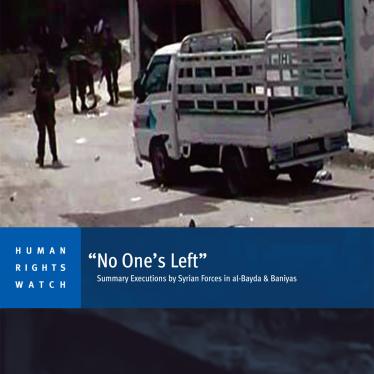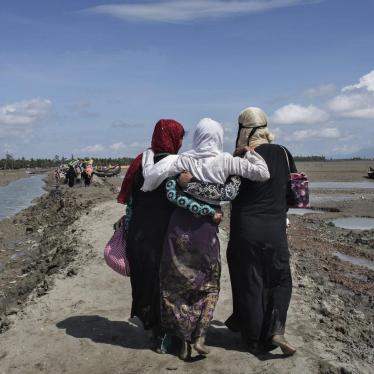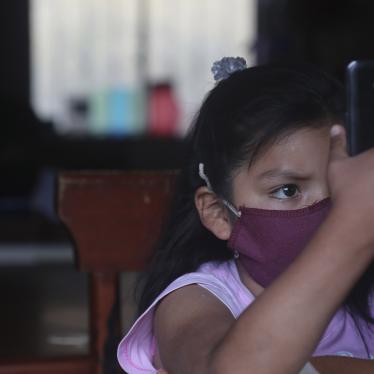(New York) – Families of the 45 protesters killed and the hundreds injured when police responded to protests over military rule with excessive force and brutality from November 19 through 24, 2011, are still waiting for justice a year later, Human Rights Watch said today.
Whether there will be justice for victims of the Mohamed Mahmoud protest, named after the street where it began, is a key test of President Mohamed Morsy’s commitment to police accountability and comprehensive security sector reform, Human Rights Watch said. Mohamed Mahmoud is a major example of impunity for police violence against protesters, against the background of the recent acquittals of police officers, following poor investigations, for protester deaths in January 2011.
“Since January 2011, the police have been literally getting away with murder, again and again,” said Nadim Houry, deputy Middle East director at Human Rights Watch. “President Morsy should use the anniversary of the Mohamed Mahmoud protest to end this impunity and begin a comprehensive process of police reform to deter further abuse.”
Confrontations between protesters and the Central Security Forces (CSF), Egypt’s riot police, raged for five days in November 2011 on Mohamed Mahmoud Street, just off Tahrir square. The clashes began after riot police violently dispersed a peaceful sit-in protesting military rule.
Human Rights Watch documented how police shot live ammunition, rubber bullets, and pellets into the crowd, and fired excessive amounts of teargas into spaces between buildings where protesters were positioned. At Zeinhom morgue in central Cairo, Human Rights Watch confirmed that 22 of the dead protesters had been shot with live bullets and that three others died as a result of asphyxiation from teargas. Police arrested and tortured dozens of protesters, including many women who were also sexually assaulted by police officers during the arrests.
The five-day toll was 45 protesters dead and over 2,000 injured. Police officers also were injured when protesters threw stones, although official numbers were not available.
An investigative judge assigned to look into the violence referred only one police officer to trial – Mahmoud Sobhi Shennawy, on charges of attempted murder and intention to permanently maim. A video clip that circulated online clearly appears to show Shennawy shooting at shoulder height into the crowd. Right after he fires, someone next to him can be heard saying, “You got him in the eye, well done.” His trial is ongoing, the next session is scheduled for December 5.
The judge made no serious attempt, though, to identify other police deployed that day who were responsible for the killings, injury, and torture of protesters.
A fact-finding committee set up by Morsy in July 2012 has a mandate to review “measures taken by executive branches of government and the extent to which they cooperated with the judicial authorities and any shortcomings that may exist.” The committee included the Mohamed Mahmoud protest as one of the incidents it is investigating, and is scheduled to submit a report with recommendations for accountability by the end of the year.
“All police officers responsible for killing, blinding, injuring, and torturing protesters at Mohamed Mahmoud need to be prosecuted and punished if Egypt is serious about deterring these abusive practices,” Houry said. “It’s equally important to carry out a fundamental reform of regulations and practices on security force use of lethal and nonlethal weapons and on how they should police demonstrations in line with human rights standards.”
Any investigation should include whether police aimed at protesters’ heads with rubber pellets and bullets. Doctors at Kasr Aini Hospital, the public hospital closest to Tahrir, told Human Rights Watch that the vast majority of injured protesters they treated had been shot in the chest, neck, or face with rubber bullets, and that 60 people had arrived with eye injuries. Rubber shotgun pellets are an extreme form of crowd control that can easily blind people if aimed at the face, which is why they are supposed to be shot at the legs when used for crowd control, Human Rights Watch said.
An Al Masry Al Youm videojournalist, Ahmad Abdel Fattah, was hit in the right eye by a rubber bullet. He told Human Rights Watch at the time that he had seen the officer who shot him: “He was aiming right for me. I think it was because I was carrying my camera.”
Ghada Shahbandar, a human rights activist, told Human Rights Watch that as she was walking down Kasr Aini Street on November 19 she passed a checkpoint where Central Security Forces officers were stationed and heard a CSF officer holding a gun say to soldiers around him, “At their heads, shoot at their heads,” pointing to the demonstrators a couple of hundred meters away.
Incidents of beating and torture of protesters and journalists also need to be investigated, Human Rights Watch said. In Alexandria, Mohammed Said Shehata, a photographer for two Muslim Brotherhood news outlets, had obtained police permission to operate behind their lines during protests at the Security Directorate headquarters.
Shehata told Human Rights Watch that when he saw a plainclothes mob attack a young boy, he started snapping photos.
“They noticed the flash and turned on me,” he said. “They hit me with sticks. They punched me, took my camera. They took my wallet.”
When they dragged him into the police station, an officer kicked him in the groin and police took turns hitting him with rubber batons. They broke his arm and bruised his head and legs.
“Unless there is fundamental security sector reform, we fear such violence will happen again and again,” Houry said. “The police don’t appear to know how to control a crowd without using excessive force, while the absence of prosecutions sends them the message that they were justified at Mohamed Mahmoud.”





